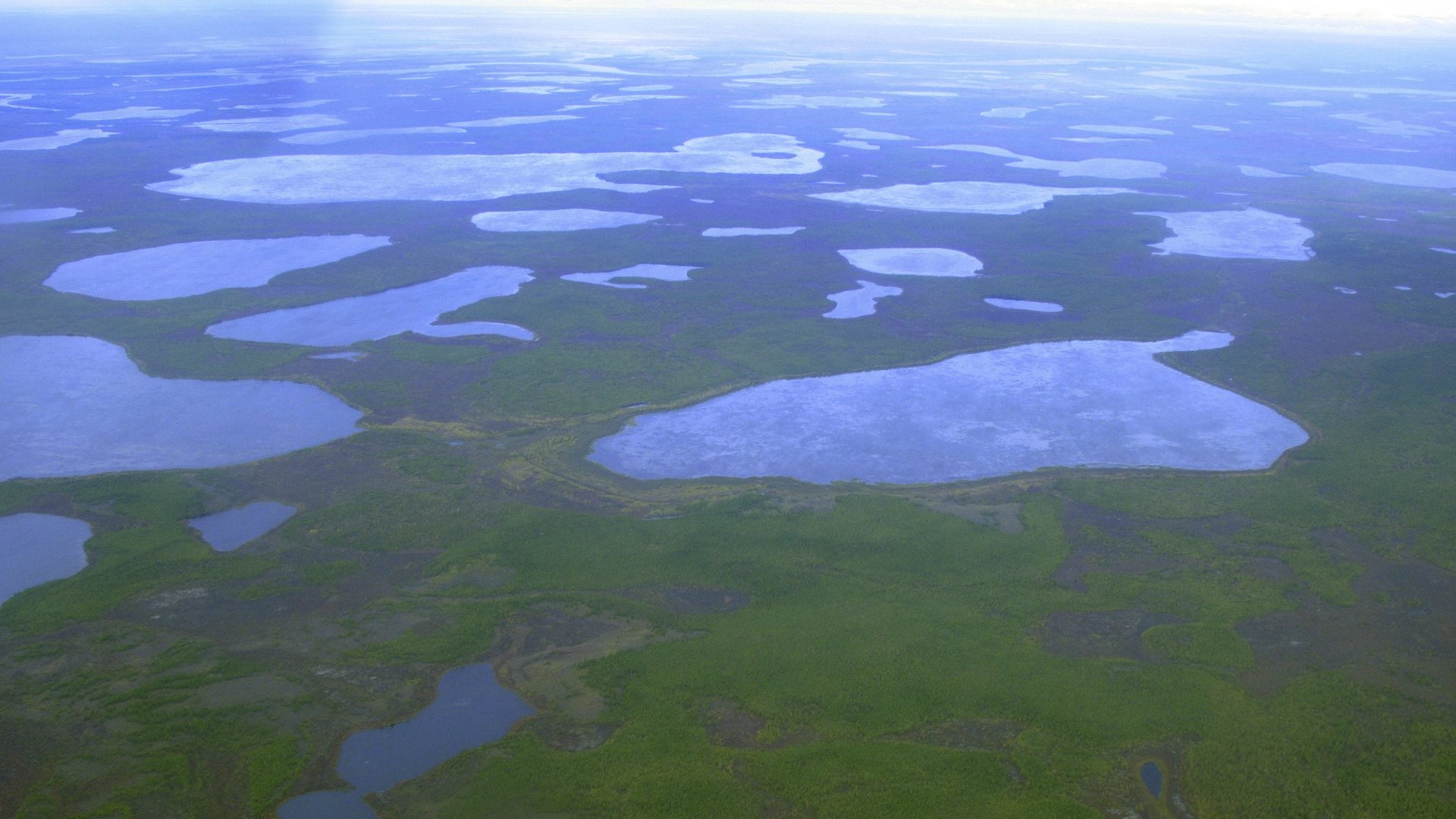The rapidly-thawing permafrost is full of mercury
As the Frozen North becomes, well, less-frozen, plenty of ancient and unsettling things could emerge from the great permafrost thaw, like giant viruses and vast stores of greenhouse gases. Apparently we need to add the neurotoxin mercury to that list.


As the Frozen North becomes, well, less-frozen, plenty of ancient and unsettling things could emerge from the great permafrost thaw, like giant viruses and vast stores of greenhouse gases. Apparently we need to add the neurotoxin mercury to that list.
The biggest continual human source of airborne mercury emissions is from small-scale gold mining, followed closely by coal-burning in power plants. After spending some time in the air, that mercury falls to earth, contaminating soil and water, and ending up in our food chain. Mercury is a neurotoxin known to cause cognitive dysfunction and other ailments. Even small amounts can affect a developing fetus in utero.
But mercury is also naturally occurring, like the kind that’s been locked away for millennia in the ancient frozen soils of Arctic permafrost. And there’s a lot more of it there than we realized.
According to a study published Monday (Feb. 5) in the journal Geophysical Research Letters, the Arctic permafrost, which, combined with permafrost in the Antarctic covers roughly 20% of the Earth’s surface, holds an estimated 15 million gallons of naturally-occurring mercury. That’s roughly 10 times more mercury there than all the mercury humans have pumped into the atmosphere over the last 30 years, according to National Geographic. It’s also almost twice as much mercury contained by all other soils, the ocean, and the atmosphere combined, according to the paper, which is the first to quantify how much mercury is trapped in the permafrost.
Right now, the permafrost mercury is mostly locked alongside all the other ancient material in the frozen ground. But it is thawing at a rapid clip, thanks to climate change. The Arctic, home to plenty of permafrost, is warming twice as quickly as the rest of the world.
Already, researchers are worried about all the methane the permafrost is set to release (and is already releasing) as previously frozen organic material from the last ice ages thaws and begins to decompose. The release of all this methane—a potent greenhouse gas—could hypothetically accelerate global warming in ways not yet accounted for in our global climate models.
The implications of significant additions of mercury into the environment are very different than those associated with methane. Paul Schuster, a hydrologist at the US Geological Survey who led the study, told Chemical & Engineering News he predicts the mercury will eventually end up in oceans, where it could potentially contaminate fisheries stocks. Fish is already the biggest source of human mercury exposure, and the permafrost could cause the baseline level of mercury present in fish to rise.
The new research doesn’t answer questions about how, when, and how much mercury could be released as the permafrost thaws. The thawing rate is dependent on the rate of global warming, as well as other feedback loops, like the fact that as permafrost thaws, it creates lakes of meltwater called “thermokarst lakes.” The accumulating meltwater—which is warmer than the deeper permafrost beneath it—causes the permafrost to melt further.
The researchers also don’t yet know how much, or how quickly, the liberated mercury could make its way into the environment and potentially affect human health—that will be the obvious next step for scientists to figure out.